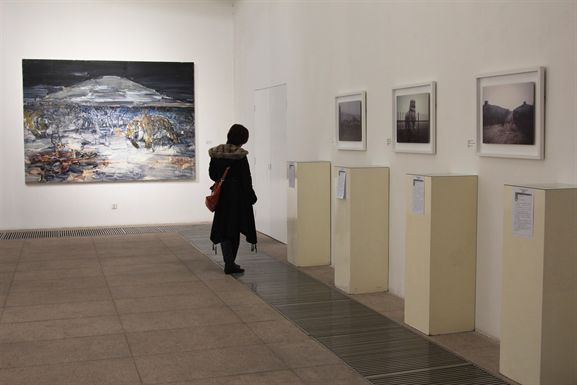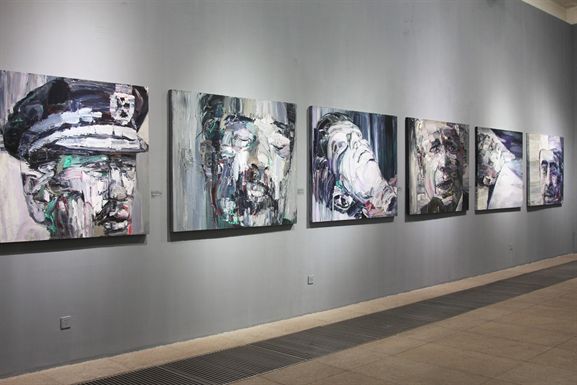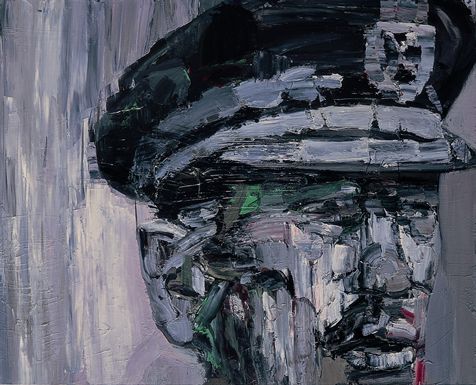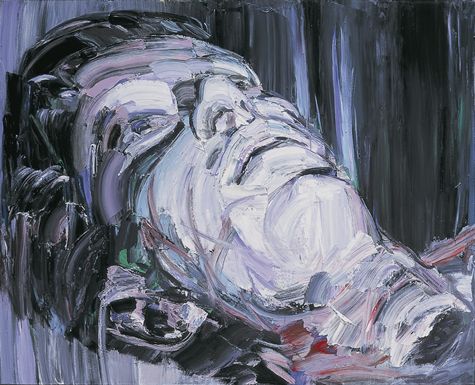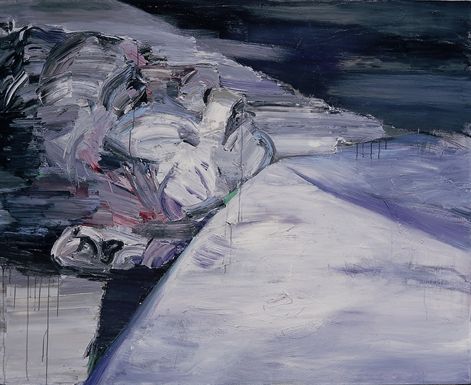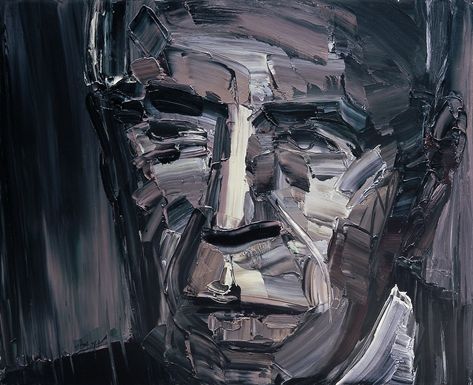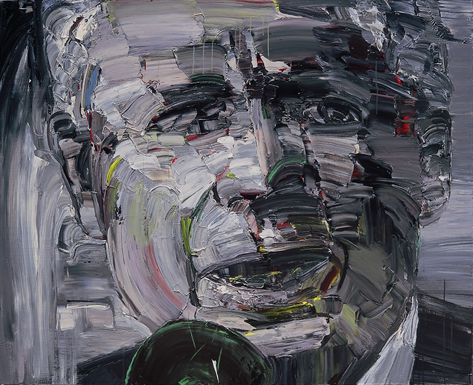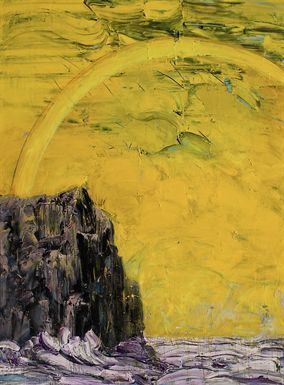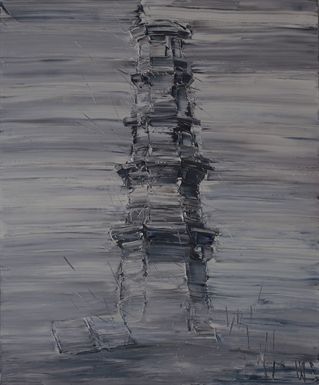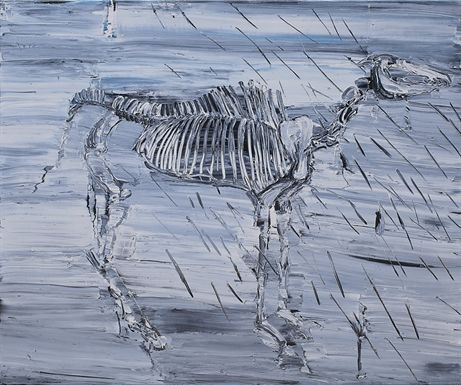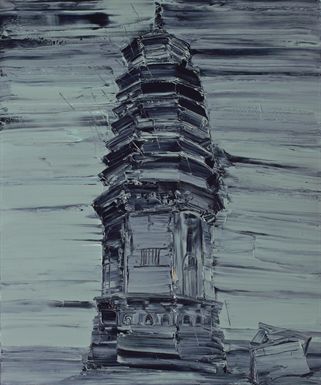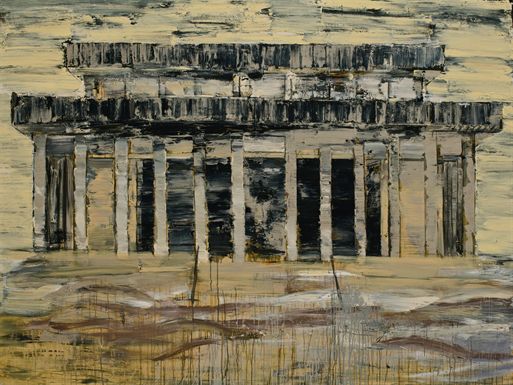The Demise Of The Things:Wu Xiaochuan Solo Exhibition
Mar 09 - Apr 09, 2013
Wu Xiaochuan is a scholar-type artist with a very distinctive disposition. He pursues knowledge by studying the very nature of things and makes reflections on social reality, cultural issues and his inner self. His creations forge a unique quality between introspection and outer-appearance. On the one hand he confines himself in the hidden stream of consciousness of life experience, tasting such fickle consciousness and emotion as death, conflict, anxiety and trauma. Yet in another state he takes a positive and active attitude, making extensive reflections and dissections of the essentials of human civilization and values. Undoubtedly, Mr. Wu is a thorough pessimist in his heart of hearts. And it is this pessimism and void that endows him with a powerful personality charm and a complicated and mutually-complementary multiple cultural individuality.
Wu Xiaochuan is a man who likes to listen to the voice of his inner self and keeps sensitive to and sympathetic with things which have passed. In his early works he shows undying pity and pain about the death of individuals. In this period he transformed his worship of human bodies with temperature and strength to his stubborn depiction of the death, bodies, carcasses and skeletons of human beings and animals. All this adheres to the artist’s self examination and his comprehension of life.
What is it after all that is elapsing? With the deepening of the artist’s self experience of life, the change of his artistic creation has become self-activated reality. Judging from a series of his creations such as expressions, human bodies, portraits, horse heads, skulls and animal skeletons, all the exterior things have become objects of the introspection of his inner world. The construction and confirmation of the subjectivity of personal value is naturally activated by the complicated and ever-changing exterior reality and environment of situation, history, people and things. This is a two-way process of both from interior to exterior and from exterior to interior. Here, the real convergence and impact of physical experience and exterior world is the basis of the subjective reflection and value correction in the universal sense.
“Confucius exclaimed at the flowing river: Time flies like this incessant stream, day and night.” — from The Analects. Time changes; matter transmigrates; life disappears in a twinkle; nature multiplies in an endless succession. In the Buddhist meditation, Mr. Wu fulfils the emancipation of himself and comprehends the true essence of liberty, because only when a person is capable of thinking freely can he really embrace liberty. His recent work of Rainbow Series reveals the contemporary mentality and awareness of artists. His series of Incomplete Form — Portraits of 10 Kings depict the images of 10 state heads who died in an abnormal way: John Fitzgerald Kennedy, Sadat, Yitzhak Rabin, Ceausescu, Kaczynski, Liu Weihuang, Gandhi, Roh Moo Hyun, Saddam Hussein and Omar Mouammer al Gaddafi. He turns the grand narration in the context of historical determinism into the introspection of individual lives and existence.
As a person who was born and grew up here in central Shaanxi, Wu Xiaochuan has always been haunted by the local humanism in his mind and emotion. He has a thorough knowledge of the geography of the Central Shaanxi Plain is very familiar with the Han and Tang civilization centering on Xi’an and Xianyang. Even in his early paintings, the emperors’ mausoleums and Buddhist pagodas were focused and depicted. In recent years the artist has discovered a new work path based on archaeology and artistic anthropology. He enters into a brand-new examination of localism and material culture with the method of field investigation and the medium of concept photography. In his series of Piling Up Mr. Wu piles up the transparent negatives of the pictures of historical remains taken by a Frenchman and a Japanese in 1920s with the contemporary scenes. He put them in the same viewing frame and had them photographed anew. As a result the pictures seem to be true to life, but are actually not. They seem to be dream-like scenes which are neither contemporary nor ancient. Here, the images in history have become the materialized objects in the realistic video images.

